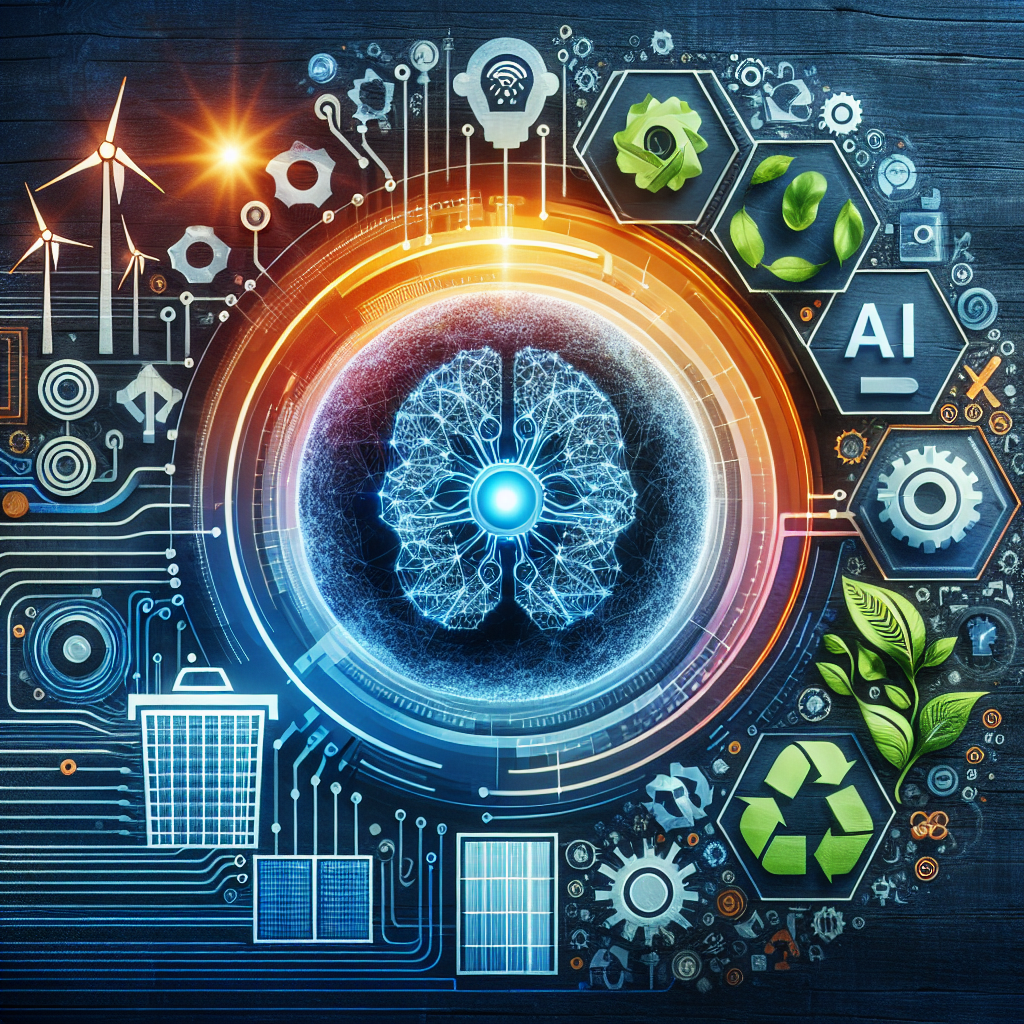Advancing Sustainability through AI-driven Innovation
In recent years, the importance of sustainability has become increasingly evident as the world faces challenges such as climate change, resource depletion, and environmental degradation. Businesses, governments, and individuals are all recognizing the need to adopt sustainable practices in order to protect the planet for future generations. One of the key tools that can help advance sustainability is artificial intelligence (AI). AI-driven innovation has the potential to revolutionize the way we approach sustainability, by enabling us to analyze vast amounts of data, identify patterns and trends, and make more informed decisions that minimize environmental impact. In this article, we will explore how AI-driven innovation is advancing sustainability and discuss some of the key ways in which it can be leveraged to create a more sustainable future.
How AI is Advancing Sustainability
AI is a powerful tool that can help us address some of the most pressing sustainability challenges we face today. By leveraging AI-driven innovation, we can analyze complex data sets to identify areas where we can improve efficiency, reduce waste, and minimize our environmental impact. AI can help us optimize energy usage, improve resource management, and develop more sustainable products and services. Here are some of the key ways in which AI is advancing sustainability:
1. Energy Efficiency: AI can help us optimize energy usage in buildings, factories, and transportation systems by analyzing data in real-time and identifying opportunities to reduce energy consumption. For example, AI-powered systems can adjust lighting, heating, and cooling settings based on occupancy levels and weather conditions, leading to significant energy savings.
2. Waste Reduction: AI can help us minimize waste by analyzing production processes and identifying areas where waste can be reduced or eliminated. By optimizing manufacturing processes, we can reduce the amount of raw materials and energy used, as well as the amount of waste generated. AI can also help us improve recycling and waste management systems by identifying ways to increase recycling rates and reduce landfill waste.
3. Sustainable Agriculture: AI can help farmers optimize crop yields, reduce water usage, and minimize the use of pesticides and fertilizers. By analyzing data on weather patterns, soil conditions, and crop health, AI-powered systems can provide farmers with insights that help them make more informed decisions about their farming practices. This can lead to higher yields, lower costs, and reduced environmental impact.
4. Climate Change Mitigation: AI can help us address climate change by analyzing climate data, predicting future trends, and identifying strategies for reducing greenhouse gas emissions. AI-powered models can help us develop more accurate climate projections, assess the impact of different mitigation strategies, and identify opportunities for reducing emissions in key sectors such as transportation, energy, and agriculture.
5. Sustainable Supply Chains: AI can help companies optimize their supply chains to reduce environmental impact and improve sustainability. By analyzing data on suppliers, transportation routes, and production processes, AI-powered systems can identify opportunities to reduce carbon emissions, water usage, and waste generation throughout the supply chain. This can help companies reduce costs, improve efficiency, and enhance their reputation as environmentally responsible organizations.
FAQs
Q: How can AI help businesses become more sustainable?
A: AI can help businesses become more sustainable by analyzing data to identify areas where they can improve efficiency, reduce waste, and minimize their environmental impact. By optimizing energy usage, reducing waste, and developing more sustainable products and services, businesses can reduce their carbon footprint and contribute to a more sustainable future.
Q: What are some examples of AI-driven sustainability initiatives?
A: There are many examples of AI-driven sustainability initiatives that are helping to advance sustainability. For example, AI-powered systems are being used to optimize energy usage in buildings, reduce waste in manufacturing processes, improve crop yields in agriculture, and develop more sustainable transportation systems. These initiatives are helping businesses, governments, and individuals reduce their environmental impact and create a more sustainable future.
Q: What are the challenges of implementing AI-driven sustainability initiatives?
A: There are several challenges to implementing AI-driven sustainability initiatives, including data privacy concerns, lack of skilled AI talent, and high implementation costs. In order to overcome these challenges, organizations need to prioritize data security, invest in AI training for their employees, and develop partnerships with AI vendors and experts. By addressing these challenges, organizations can successfully implement AI-driven sustainability initiatives and reap the benefits of a more sustainable future.
In conclusion, AI-driven innovation has the potential to revolutionize the way we approach sustainability by enabling us to analyze data, identify patterns, and make more informed decisions that minimize environmental impact. By leveraging AI, we can optimize energy usage, reduce waste, improve resource management, and develop more sustainable products and services. AI-driven sustainability initiatives are already making a positive impact in areas such as energy efficiency, waste reduction, sustainable agriculture, climate change mitigation, and sustainable supply chains. By continuing to invest in AI-driven innovation and collaboration, we can create a more sustainable future for generations to come.

